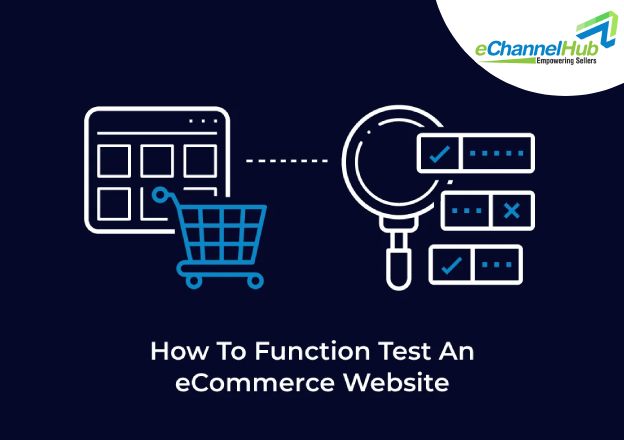How to Ensure That Your E-commerce Is Safe and Functional

If you are starting an online sale, you need to take care of more things before selling the first product. With 1.31 billion people who will have online payment cards by 2023, with an ever-expanding range of online stores and the growing popularity of global giants, markets around the world – both in developed and underdeveloped countries – are ready for the e-commerce boom. But, before you rush to open your online store – whether you are offering a unique product or a wide range of different things – you need to start with the basics. In the case of e-commerce sites, for the creation of which there are various pricing plans throughout specialized online platforms – with several of such pricing plans coming without hidden costs – among them the basics are more demanding here than at ordinary web windows.
Let’s not forget to stress this: When the competition is fierce and the possibilities of the Internet are limitless, never underestimate the power of the email newsletter to remain in touch, establish, and sustain connections with clients when owning an online store. For those who are unfamiliar, an email newsletter is not a difficult concept to grasp. In a word, they are a type of direct message sent to existing customers or subscribers by a company.
People frequently believe that email newsletters are time-consuming, ineffective, expensive, and never yield any results. They are actually the polar opposite, especially with platforms with the help of which you can have a terrific, low-cost approach to reach out to your audience/subscribers and express a message about your company and its products by sending out an email newsletter.
Below, we present some of the important things you need to address before inviting your first customers to visit you, as well as things you need to take care of continuously as long as your online store is open.
Security and Verification
Everything starts from the site, and it is not complete without obtaining the appropriate SSL certificate. Now, even the most ordinary sites cannot ‘get through’ without a certificate, and e-commerce sites are especially exposed here. Without a certificate tailored to the needs of the site, the browser will display a message next to the site address that they are not adequately secured, which will be a clear signal to potential customers to spend their money elsewhere.
In addition, the user authentication system is important. Nowadays, using only a username and password is not enough, especially not for approving higher-value transactions. The European Union has therefore adopted a revised Payment Services Directive (PSD2), which obliges all participants in online payment systems to allow additional verification of all transactions over 30 euros.
Anyhow, you need to introduce multi-factor authentication because even the least secure system of additional verification with one-time codes via SMS greatly reduces the possibility of malicious activity. And there are a variety of other mechanisms available that are both safer and provide a better user experience…
Request Only Necessary Data
Even with all sorts of precautions, the data of the users of the e-commerce site can leak to the public. In order to mitigate the consequences of such situations, ask the users only for the information that is absolutely necessary for you to successfully sell and deliver products to them. For everything else, don’t even leave them the opportunity to give it to you as a part of their information.
This will also help you to have a smaller scope of obligations following the current regulations on the protection of personal data. If you sell in the European Union, it is the GDPR, while, say, in California, it is the CCPA. Wherever you want to sell, find out in time what your legal obligations are in the country where your online store is registered.
An important step in sales is, of course, the processing of means of payment – mostly cards. To have as few challenges as possible with this aspect, the best option is to find a solution in which a specialized service will take care of the complete process. That way, you will not have any contact with your customers’ card information and you will be sure that everything will go well – of course, if you choose a service with a good reputation.
A System That’s Always up to Date
In order for the online store to work without problems, it is extremely important that there are no technical problems. Here is the first important choice – where will the site be hosted? Servers must always be available and their software regularly updated to be resistant to newly discovered vulnerabilities, and additional tools to protect against DDoS attacks and other online threats must be present. On the other hand, the software on which the e-commerce site is based must also be adequately updated and constantly monitored in order to detect and resolve any omissions in a timely manner.
An important part is checking the settings of the domain that is linked to the site. Inadequately protected domains are subject to the so-called pharming attacks in which criminals redirect visitors of your online store to their own site, which often looks like a copy of a legitimate site but with the only goal to steal visitor data.
The consequences can be long-lasting. First of all, you lose the revenue you would have earned while your site was unavailable, but also the reputation of a reliable point of sale. Attackers can also gain access to your e-mail accounts and thus access to an additional set of information that may be useful to them. As usual, in this case, the old saying applies – better safe than sorry.
Proper (Secure) E-commerce Platform
E-commerce platforms are typically chosen for their ease of use, variety of design, and functionality, but security features must also be considered. Look for e-commerce platforms with secure payment gateways, SSL certificates, and strong authentication mechanisms for both vendors and customers. These are WooCommerce, Sears, Wix, Shopify, and BigCommerce.
The good news is that cloud-based security technologies have made protection more affordable for small and mid-size businesses. These tools can help you get some of the advantages of better automation. You have access to some of the machine learning and curated rule sets that some cloud-based systems have implemented. Take a look at cloud-based security options, especially ones that include intelligence.
Consider the long-term profitability of Sears or any e-commerce platform, as well as how frequently upgrades and security patches are applied to ensure the service’s long-term security. Small online firms should look at scalable e-commerce platforms that can expand and adapt to their changing needs. Consider the software’s life cycle after it has been integrated into your e-commerce platform.
Each stage’s technology requirements should correspond to the stages of an e-commerce’s life cycle. E-commerce business has 4 stages: startup (less than 2 years in operation), expansion (2-4 years in operation), establishment (5-9 years in operation), and business maturity (10 years or more in operation).
Software/IT requirements:
- Startup: IT infrastructure at its most basic; there should be no complications, and installation should be simple; a cautious buyer to minimize interruption; due to a lack of funds, requirements are cost-conscious.
- Expansion: Scalability; technology that has been proven to work, value for money; new technology’s evaluation/pilot.
- Establishment: Efficiencies in operations and cost reductions; improving current IT; value over cost; evaluation of the vendor.
- Business maturity: Efficiencies in operations and cost reductions; for new business stages, active tech adoption vs. conservative behavior to maintain current operations; upgrade/replacement is the main focus.
Use Your Own Website Monitoring System
While most e-commerce website hosting services include some form of monitoring tool as part of their standard package, there is no reason to overlook more powerful third-party website monitoring solutions. You should investigate these possibilities because solutions like LogicMonitor and New Relic offer far more advanced management features that will not only help your website run more reliably but also more securely.
The option to create your own dashboard and use features like application operation monitoring and performance benchmarking helps ensure that your site stays up and running, especially if you can monitor it from anywhere using the mobile clients that these solutions frequently provide. Deeper features, such as a thorough audit trail for any feature adjustments or a code-level root cause analysis engine, can enable business operators, IT, and security professionals to track down security concerns as they happen or even before they happen, even if you are not an IT professional. Anyone who has turned a website into a business should look into such technologies to see whether their capabilities may help keep the site and its data safer. If they can, the majority of them are inexpensive enough to invest a no-brainer.
Conclusion
Long gone are days when e-commerce websites were platforms just for advertising a company’s brand and products, as well as a way for customers to provide feedback.
Small and medium businesses may earn a lot of money from online shopping since it is easier than ever for them to compete directly with larger companies using today’s e-commerce tools and technologies. The benefits of e-commerce are straightforward. Everyone is online these days, allowing them to buy your stuff boosts your ability to produce more revenue. What is the catch? It is something that everyone is doing!
Write For Us
Gain multichannel inventory visibility and control with eChannelHub
Learn more about eChannelHub with a free demo, tailored for your unique retail business.
Request A DemoRequest a Demo
Gain multichannel inventory visibility and control with eChannelHub
Learn more about eChannelHub with a free demo, tailored for your unique online business




